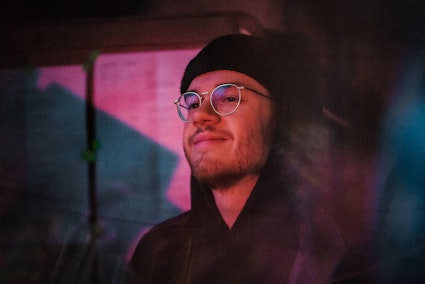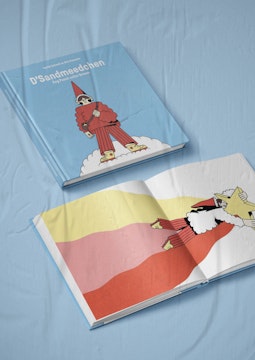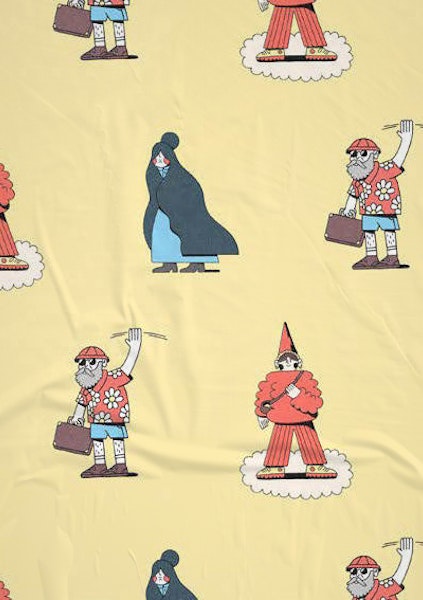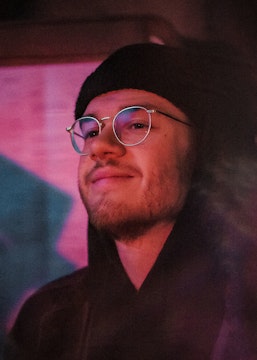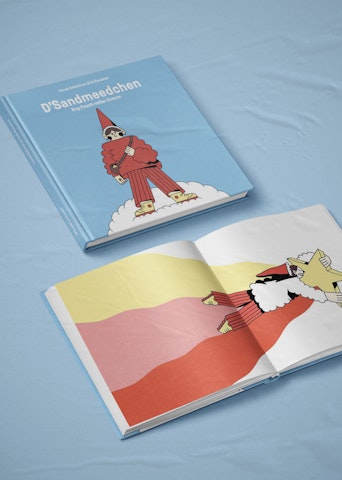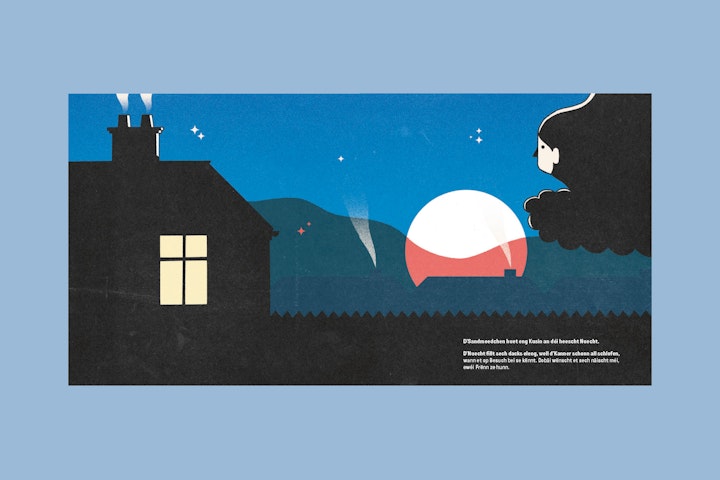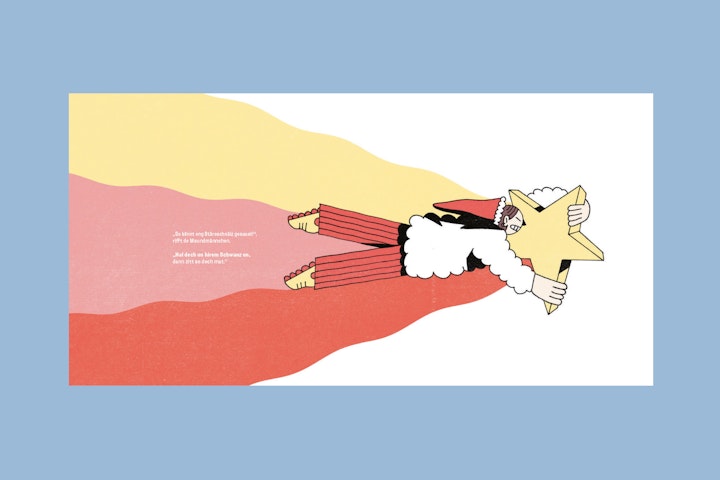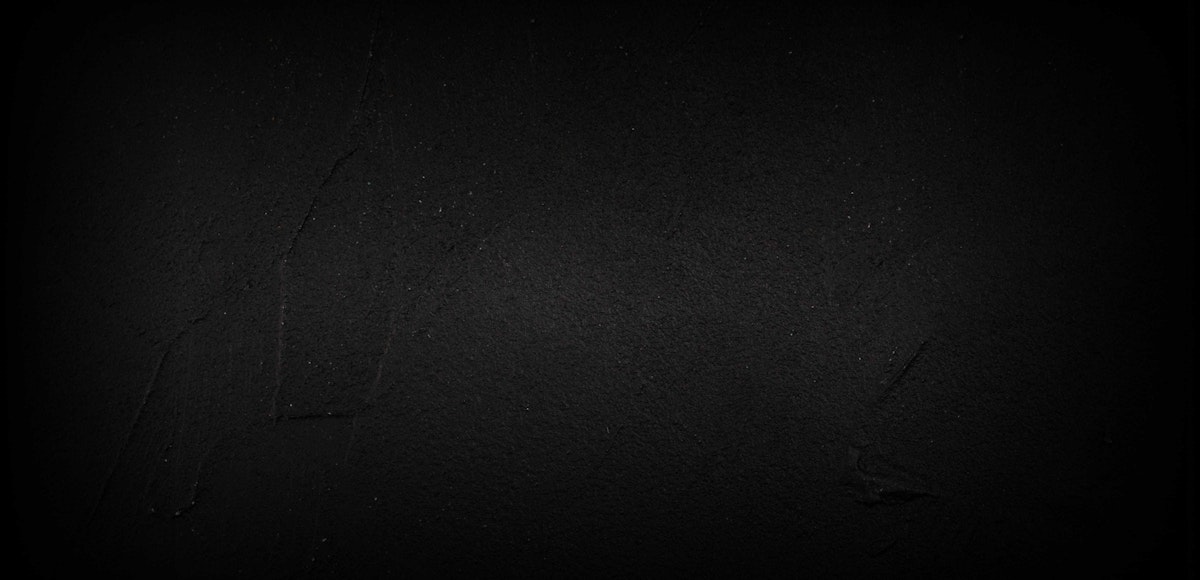
The illustrator Dirk Kesseler
When Rotondes approached you to illustrate a children’s book, what made you want to join the project? Was the perspective different compared to what you usually do?
I’d wanted to work on a book for some time, to test myself. Normally I do prints, single illustrations, like posters. But for a longer story, all the characters have to remain coherent, keep the same appearance, wear the same clothes, and the proportions have to be right all the time because they appear many times. It’s a different way of working.
For children especially, it’s really important that they recognise the characters from page to page. I normally wouldn’t have dared venture into doing a children’s book because of the extra challenges, but as this one wasn’t set out to have the typical children’s book aesthetic, it suited me well. Generally speaking my drawings are rather graphic, so I wanted to avoid what you often see in children’s books: characters that are either young children or animals, or slightly corny drawings in watercolours.
Yorick Schmit had already written most of the text before you started drawing, but you were involved in the creative process from the beginning. How did text and illustrations influence each other?
Yorick made several suggestions of different fairytale reinterpretations but the one with Sandmeedchen was the one that appealed most to me from the start. The story generated a whole visual world in my head. We collaborated really well. I’d give Yorick feedback on the story and he’d come back to me with his thoughts and suggestions about what could be on each page, so there’s no doubt that he influenced my drawings.
You said you were drawn to the story straight away but were there any unexpected elements that made the working process difficult?
In fact, the most difficult thing was to work on my first book during a lockdown here in Berlin. Sitting at your desk at home without any possible entertainment, with the sun going down early and sub-zero temperatures outside doesn’t really help to stay focused. And I couldn’t even go out and seek inspiration at an exhibition or anything.
How did you decide upon your drawing style and colour palette?
My style isn’t really set yet. It changes a lot and will probably continue to do so until I start working fulltime. In this particular case my drawings had to be a bit more child-friendly than usual. The colour palette is the one I’ve been using for over a year, with a lot of red and blue shades. But I tried to use them in a conceptual way: blue for the night and red for daytime scenes. I wanted there to be a pleasant contrast from page to page. The book doesn’t have many pages but there are really a lot of colours.
How does the graphic setting you’ve created contribute to the readers’ experience of the story?
It’s important to give children a visual foundation on which they can build a story. A children’s book won’t go as far as, say, an animated film, which shows everything and leaves little room for the viewers to use their imagination. In this book there are time skips and not every sentence is illustrated. The children can make up what happened between two pages or two drawings. It leaves more space for their imagination.
Can you tell us a bit about how the animations were created? Were you surprised about the way your drawings came to life?
When I was working on the drawings, I had in the back of my mind how the pictures could be animated. This was necessary as every drawing had to have different layers, for example, one layer for the clouds, another with Sandmeedchen and a third for the background. Virtual Rangers took care of the technical aspect, building my illustrations into the app so everything can work. They also came up with the idea of making a kind of pop-up book out of it: because of the different depths of the drawings, the animated images look three-dimensional instead of sitting flat on a page. So, when you move a phone or tablet across the page, you get a 3D effect. Right now I know what the animated illustrations will look like, but I’m really excited to see the first prototypes, to see which layers literally stand out from the book and how far apart the elements are from each other.
As we are on the subject of augmented reality, in your opinion, what is the added value of it in a children’s book?
Augmented reality makes the book come alive. It’s special, different and it moves, so children are easily captivated. By adding this extra layer, similar to a pop-up book, you can go further in the way you draw the reader into the story. From the start, the book was conceived to be a shared experience between children and adults, if only because of the technical aspect, like downloading the app. This book is most likely also something new for parents. Today’s adults grew up reading children’s books too, but their experience of it was probably very different.
I also think that the classic, traditional children’s tales with a princess in a pink dress isn’t that appealing anymore, in particular to young parents. This story is unconventional, making it easier for young parents to connect with it and allowing them to see a new side of what a fairytale can be. For me it was important that Sandmeedchen didn’t look small and cute. She looks somewhat androgynous and is dressed in sportswear. Sandmeechen is in her teens, so she’s a little older than the children who will be reading the story, which means they can use her as an example and look up to her.
